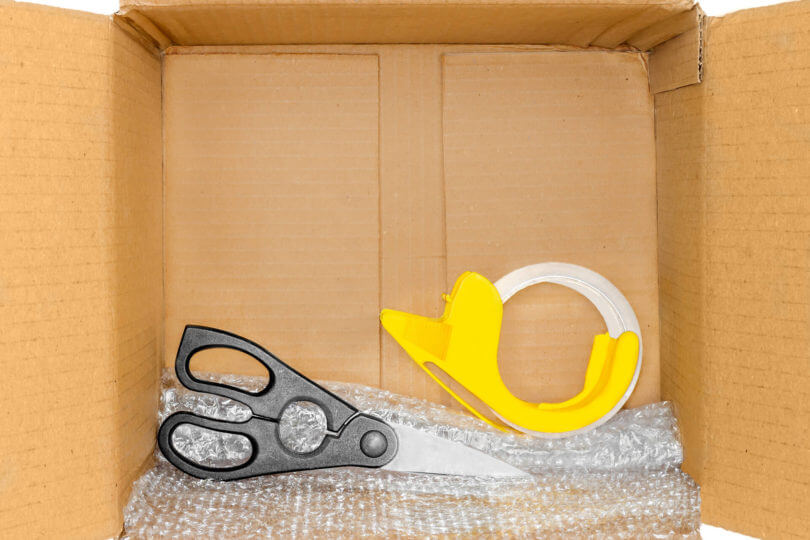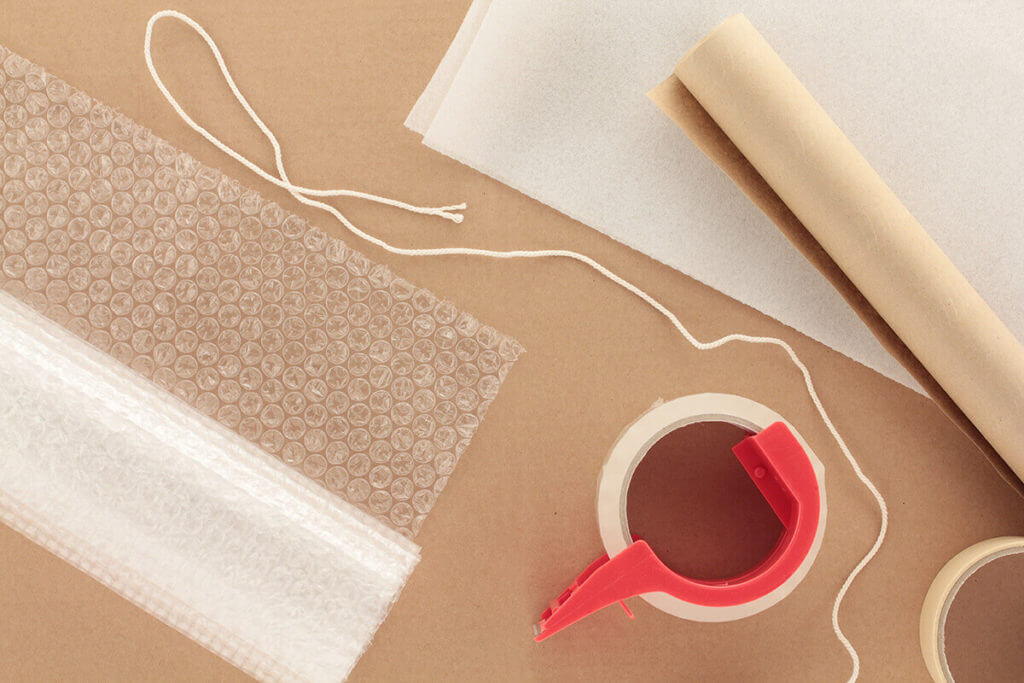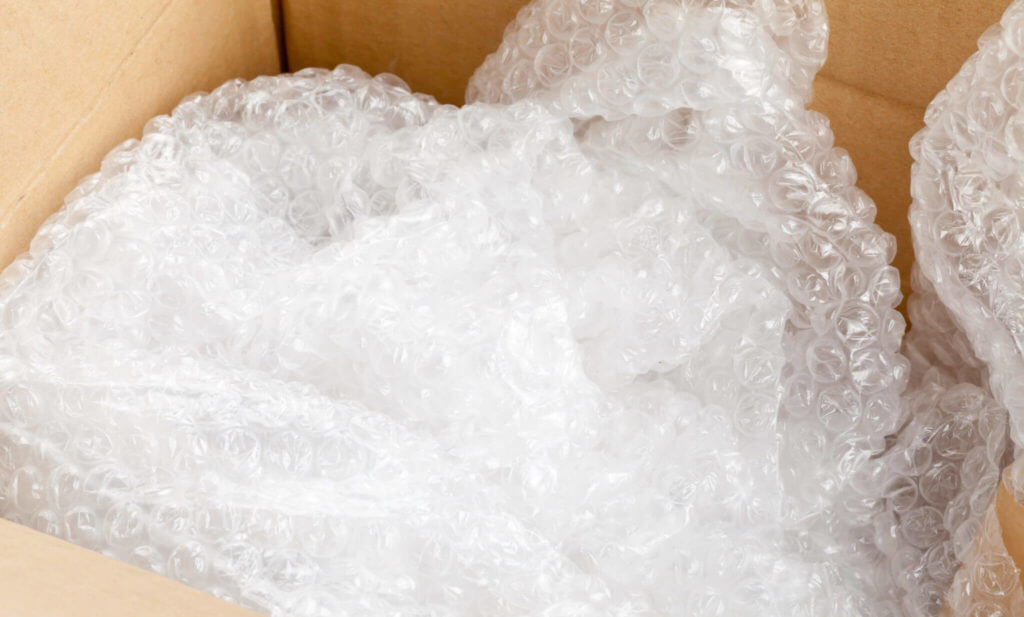During moving, people often focus on the big picture – securing a new home, organizing logistics, and saying goodbye. However, amidst the chaos and excitement, the crucial role of different packing materials is frequently overlooked. These unsung heroes of relocation day make the process efficient and organized for amateurs and professional long-distance movers.


From best-sized relocation boxes to sturdy packing tape, different packaging materials are the backbone of a successful move. These relocation essentials provide support and protection, ensuring all treasured possessions arrive in the same condition as they left. Explore the various types of materials, their unique benefits, and how to utilize them effectively.
Cross-country moving presents unique challenges, as it requires more detailed planning, longer transit times, and a higher risk of damage to your belongings. The importance of using different materials for relocation cannot be overstated, as it ensures the safety of your possessions throughout the entire journey.
From organizing packaging to determining when to start, the right materials make a big difference in the experience. When relocating cross-country, you must organize packaging well in advance.
Researching “long-distance movers near me” and familiarizing yourself with the various materials on the market will help you make informed decisions about the best options for your specific needs.
This includes selecting the right boxes, padding materials, and techniques to ensure your belongings are adequately protected from bumps, jolts, or environmental hazards they may encounter during transportation.
Determining when to start packaging is another crucial aspect of a successful relocation. The earlier you begin, the more time you’ll have to source high-quality materials, allowing you to make cost-effective choices without compromising on quality. Starting early also provides ample time to pack methodically and securely, reducing the likelihood of damage or loss during shipping.
When moving, having a variety of packaging materials at your disposal is essential for ensuring the safety and protection of your belongings. The debate of bubble wrap vs packing paper is just one of the many considerations you’ll face when selecting the most suitable relocation supplies.
Learning about the different types of packaging materials and their best uses will help you make the right choices for your relocation needs.
Bubble wrap is a popular choice for packing fragile items, thanks to its cushioning properties and ability to conform to the shape of your belongings.
The air-filled bubbles provide a protective, shock and vibration-absorbing layer, making it ideal for packaging delicate items like glassware, ceramics, and electronics. To use bubble wrap effectively, wrap each fragile item individually and secure the wrapping with duct tape.
These peanuts are a lightweight and versatile material, perfect for filling voids in boxes and providing additional cushioning.
They are particularly useful when packing glasses, as they can be poured into the empty spaces between the items to prevent movement and reduce the risk of breakage.
When using this, place a layer at the bottom of the box before adding your wrapped items, and then fill in any gaps with more peanuts.
Foam sheets and rolls are a soft, flexible material that can be used to pack clothes and delicate items. They provide a gentle, cushioned layer that helps prevent scratches, dents, and other damage during shipping.
Foam sheets can be easily cut to size and wrapped around items for added protection, while foam rolls can create a padded layer in boxes or as separators between items.
Inflatable air pillows are a modern and efficient solution providing excellent protection and contributing to a stress-free move. They are lightweight and easy to use, offering adjustable cushioning that can be tailored to specific needs. Inflatable air pillows can be used to fill voids in boxes, provide additional padding, or be a protective layer for larger or oddly shaped items.
Newsprint and paper are versatile and cost-effective materials, ideal for a wide range of applications. They are particularly useful when packing antiques and other items that require a soft, non-abrasive protective layer.
To use newsprint or paper effectively, crumple the sheets and use them to fill voids in boxes or wrap individual items before placing them in their designated containers. Remember to use ink-free newsprint to avoid stains.

For those looking to protect items in storage units, cross-country movers usually have specialized materials that can make a significant difference in ensuring the safety of your belongings. From packaging golf clubs to securing delicate glassware, these unique solutions cater to the specific needs of various items.
Dish and glass packs are specially designed solutions for delicate dishware and glass items. They include cardboard dividers and foam pockets that provide individual compartments for each item, reducing the risk of breakage during transportation.
When using dish and glass packs, be sure to label each box with moving labels, indicating the fragile nature of the contents and the box’s orientation, for example, “This Side Up.”
When moving furniture, it’s crucial to protect your valuable pieces from dirt, dust, and potential damage. Furniture and mattress covers are designed to fit snugly, providing a layer of protection against scratches, scuffs, and other types of damage that can occur during shipping.
These covers are available in various sizes and materials, including plastic, padded, and quilted options, to suit the specific needs of your furniture and mattresses.
Stretch wrap is a versatile and essential packaging material for securing items during transportation or storage. Made from a strong, flexible plastic film, stretch wrap clings to itself, allowing you to create a tight, protective layer around your belongings.
This material is particularly useful for bundling items like curtain rods, garden tools, or disassembled furniture components. Stretch wrap can also be used to secure drawers, doors, and other furniture parts, ensuring they remain in place. Additionally, a stretch wrap can help protect upholstered furniture from dirt, moisture, and damage.
As environmental awareness becomes an increasingly important aspect of our lives, considering eco-friendly packaging material options should be a part of every relocation to-do list.
From transporting houseplants to protecting fragile items, choosing sustainable materials helps reduce our environmental impact and offers unique relocation benefits.
Learn about the advantages of using eco-friendly materials and biodegradable and recyclable packing alternatives.
Using eco-friendly packaging materials presents several advantages, including:
Here are some eco-friendly material options to consider for your next move:
By incorporating eco-friendly packaging materials into your relocation plans, you can enjoy a more sustainable and environmentally conscious relocation experience.
When preparing for relocation, you must optimize your packaging material usage to ensure the safety of your belongings, minimize waste, and save on moving costs. This is especially important when relocating to a different climate or trying to remember all the things people forget when relocating.
Before purchasing packaging materials, take an item inventory to determine the types and quantities of materials you’ll need. This helps avoid overbuying and ensures you have the right stuff.
Using appropriately sized boxes is another crucial component for optimizing packaging material usage. You can look for tips online for the best-sized containers or go the manual route by measuring and weighing your stuff.
Look for opportunities to reuse or repurpose existing materials, such as using old newspapers, magazines, or towels for cushioning. When packaging items of similar shapes and sizes, consider nesting them together to save space and reduce the amount of material required.
Fill empty spaces within boxes with small items or materials to prevent items from shifting during transit. Labeling your boxes with their contents and destination rooms helps with unpacking but also allows you to prioritize the use of materials for items that require more protection.
Breaking down large pieces of furniture into smaller components can save space and reduce the amount of materials needed. Keep all hardware in a labeled bag and attach it to the corresponding furniture piece.
Start gathering packaging materials well before your move to avoid last-minute purchases and potential waste. Planning ahead also allows you to source more sustainable or cost-effective material options.
If you’re unsure of what else to do regarding packaging and preparations, the woman in the video below provides helpful and quick tips for the ultimate move.
After the relocation, you might find yourself with an abundance of materials that need to be disposed of or recycled. Ensuring the proper handling of these materials contributes to a cleaner environment and helps others in need.
Flatten your cardboard boxes and take them to a local recycling facility or place them in the curbside recycling bin if your community offers this service. Cardboard is highly recyclable and can be repurposed into new products.
Consider keeping some of the materials, such as bubble wrap, packaging peanuts, or foam sheets, for future moves or storage needs. Storing them in a clean, dry place will ensure they remain in good condition for later use.
Some schools, community centers, or charity organizations may appreciate donations of packaging materials for art projects, storage, or their own relocation needs. Contact local organizations to inquire if you can donate books, newspapers, and any other packaging materials.
If you have furniture or other bulky items that are in good condition, but you just don’t need them, consider making a donation to local charities, shelters, or thrift stores. Many organizations offer free pickup services for donating furniture, making it convenient and easy to give back to your community.
Get creative and find ways to repurpose those materials for DIY projects, like for insulation, storage solutions, or children’s playhouses. If you’ve used biodegradable packaging materials, such as cornstarch-based packaging peanuts, consider composting them in your backyard or through a local composting facility.
For packaging materials that cannot be reused or donated, check with your local recycling facility to learn about proper disposal methods. Some facilities may accept materials like plastic bags, bubble wrap, or foam for recycling.

Learning how to move efficiently and using the appropriate materials can make all the difference when relocating your belongings over long distances. For a seamless and stress-free relocation experience, consider contacting the professional long-distance moving services of Trico Long Distance Movers.
With our expertise in packaging services, they can ensure safety and item protection while providing valuable tips and techniques for an organized and efficient relocation. Don’t leave your relocation success to chance – reach out to Trico Long Distance Movers today and let our experienced team guide you.
The most common packaging materials used for moving day include cardboard boxes, bubble wrap, packing paper, packing peanuts, foam sheets, and rolls, as well as tape and moving blankets. These materials offer varying levels of protection and are suitable for packing a wide range of items.
Consider the fragility, weight, and size of your items when determining the appropriate materials. For example, use bubble wrap for fragile items, packaging peanuts for filling voids in boxes, and foam sheets for protecting the surfaces of larger items.
Reusing materials from a previous move is both cost-effective and eco-friendly. However, ensure that the reused materials are still in good condition and provide adequate protection for your items.
Eco-friendly alternatives to traditional packaging materials include biodegradable packaging peanuts, recycled cardboard boxes, and repurposing old newspapers, magazines, or textiles as cushioning.
To effectively use bubble wrap, wrap each fragile item with the bubble side facing inward, ensuring full coverage, and secure the wrap with tape. Use multiple layers for additional protection and place bubble-wrapped items in boxes with additional cushioning, such as packing peanuts or crumpled paper.
Anti-static bubble wrap and foam are specifically designed to protect electronics and delicate devices, as they help prevent the buildup of static electricity, which can damage sensitive components.
To ensure adequate protection, use enough packaging materials to completely cover each item and prevent it from moving within the box. Fill voids with cushioning materials to minimize movement during transit.
After your move, consider recycling or repurposing materials. Cardboard boxes can be recycled, while bubble wrap, packing peanuts, and foam sheets can be reused for storage or future moves. You can also donate materials to local schools, community centers, or charitable organizations.
To save money on packaging materials, consider reusing materials from previous moves, repurposing household items (like towels or newspapers), and sourcing free or discounted materials from local businesses or online marketplaces.
Specialty packaging materials can be found at moving supply stores, home improvement stores, or online retailers. Additionally, some moving companies offer specialty materials for purchase or rental as part of their services.